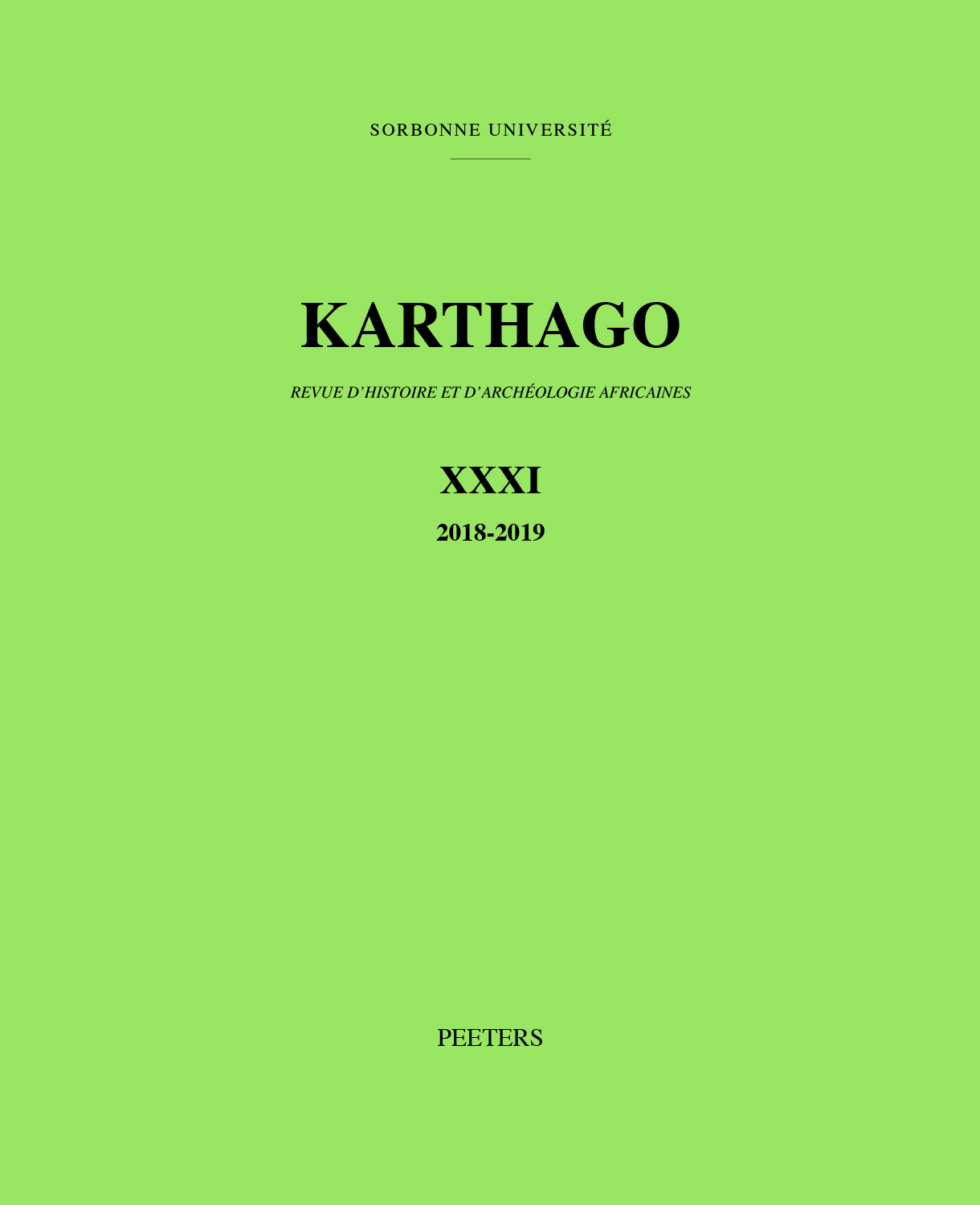 previous article in this issue previous article in this issue | next article in this issue  |

|
Document Details : Title: L'espace politique du Détroit de Gibraltar sous le Haut-Empire romain Subtitle: La désagrégation du Cercle du Détroit ou l'appartenance à un horizon stratégique commun? Author(s): BERNARD, Gwladys Journal: Karthago Volume: 29 Date: 2014-2015 Pages: 121-133 DOI: 10.2143/KAR.29.0.3170075 Abstract : Travailler sur les relations politiques entre les deux rives de l’Extrême-Occident méditerranéen à l’époque romaine implique de se pencher sur le paradigme appelé Cercle du Détroit. Cette notion, née à la fin des années 1950 dans les études de M. Tarradell, désigne le circuit relationnel particulier mis en place entre les colonies phéniciennes de l’Extrême-Occident. L’idée majeure du Cercle du Détroit est celle d’une unité économique et commerciale, voire politique et administrative, entre Gadir/Gades et ses relais hispaniques et maurétaniens. Un vaste consortium se serait établi entre les espaces du golfe ibéro-marocain, Cadix réexportant à Rome les productions maurétaniennes comme les salaisons de poissons ou l’huile dans des emballages signés du «label» gaditain. Même si ce schéma a été assez vite remis en cause, il est resté prégnant dans les mentalités et a même conditionné l’étude des relations politiques: jusqu’à l’expansion romaine, et même au-delà pour certains auteurs, la Maurétanie n’était vue que comme un prolongement de Gades, comme un appendice de la péninsule Ibérique. Après l’intégration de Gades dans les cadres administratifs romains et la disparition de la spécificité des comptoirs phéniciens d’Extrême-Occident, cette notion de Cercle du Détroit semblait logiquement condamnée à la désagrégation et à la dissolution dans les structures provinciales romaines. Cependant, les sources littéraires et épigraphiques des trois premiers siècles de notre ère nous permettent de nuancer cette affirmation. D’Auguste à Dioclétien, des liens administratifs et militaires se maintiennent ou se tissent entre les deux rives de la Méditerranée occidentale, liens qui expliquent l’insertion de la Maurétanie tingitane dans le Diocèse des Espagnes sous la Tétrarchie. Mais ces relations politiques sous l’Empire peuvent-elles être modélisées par cette notion de Cercle du Détroit? Comment problématiser les relations administratives et militaires dans l’espace du Détroit aux trois premiers siècles de notre ère? Est-il réellement possible d’en rendre compte par un paradigme explicatif? Work on the political relations between the two shores of the West Mediterranean in Roman times involves focusing on the paradigm called Circle of the Strait (of Gibraltar). This notion, born at the end of the 1950s in the studies of M. Tarradell, means the particular relational circuit established between the Phoenician colonies of the Extreme West. The major idea of the circle of the Strait is an economic and commercial unity, even a political and administrative one, between Gadir/Gades and its Hispanic and Mauretanian relays. A broad consortium would be established between the spaces of the ibero-Moroccan Gulf, Cadiz re-exporting to Rome Mauretanian products such as garum or oil productions in signed packages of the 'label' Cádiz. Even if this scheme was soon called into question, it remained present in people’s minds and has even been used in the study of political relations: until Roman conquest, and even after for some authors, the Mauretania was only seen as an extension of Gades, as an appendage of the Iberian Peninsula. After the integration of Gades in Roman administrative frameworks and the disappearance of the specificity of the Phoenician cities in the Extreme West, this notion of Circle of the Strait seemed logically doomed to disintegration and dissolution in Roman provincial structures. However, literary and epigraphic evidences of the first three centuries of our era allow us to qualify this statement. From Augustus’s time to Diocletian, administrative and military ties are maintained between the two shores of the Western Mediterranean, links that explain the insertion of Mauretania Tingitana in the Diocese of Spains under the Tetrarchy. But can these political relationships under the Roman Empire be modeled by this notion of Circle of the Strait? How to problematize the administrative and military relations in the area of the Strait in the first three centuries of our era? Is it really possible to account by an explanatory paradigm? |
|
